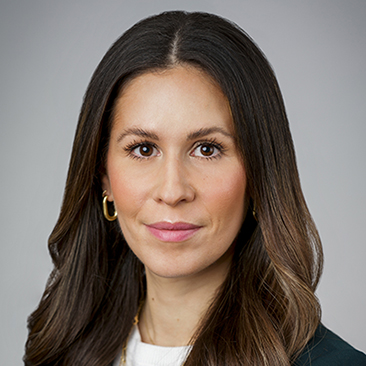Roust Corporation (“Roust”) caught everyone’s attention when, on January 6, 2017, Southern District of New York Bankruptcy Judge Robert Drain held a joint first day and confirmation hearing and confirmed the prepackaged plan of reorganization of Roust Corporation and certain affiliates (collectively, the “Debtors”) only six (6) days after the Debtors commenced their chapter 11 cases. In re Roust Corporation, et al., Ch. 11 Case No. 16-23786 (RDD) (Bankr. S.D.NY. Dec. 30, 2016). You’re a seasoned bankruptcy attorney. You know that Bankruptcy Rule 2002 requires 28 days’ notice for objections to and approval of a disclosure statement and objections to and confirmation of a plan of reorganization. So how exactly did the Debtors turn 6 days into 28? They started the clock before the petition date.
According to their first day declaration, the Debtors and certain non-debtor affiliates (the “Company”) operate primarily in the alcoholic beverage industry as one of the world’s largest vodka producers and Central and Eastern Europe’s largest integrated spirit beverage business. The Company, which primarily operates in Poland, Russia, Ukraine, and Hungary, produces and sells its own spirit brands and imports and exports spirits and wines on an exclusive basis. Although Roust previously emerged from chapter 11 in 2013, macroeconomic conditions left the Company over-leveraged and hampered by liquidity constraints and high borrowing costs. After several months of negotiations with noteholders, the Company entered into a restructuring support agreement (“RSA”) with ninety percent of their senior notes and two-thirds of their convertible notes (the only impaired claims under the Debtors’ proposed prepackaged chapter 11 plan entitled to vote).
On December 30, 2016, the Debtors commenced their chapter 11 cases, seeking plan confirmation on January 6, 2017 and seeking to emerge by February 15, 2017. The Debtors claimed to have created this condensed timeline to address non-U.S. employees, vendors, and local credit support providers in foreign countries—namely, in Russia, Poland, Hungary, and Ukraine where the Debtors had foreign operating subsidiaries—who would likely perceive bankruptcy negatively, resulting in unintended consequences to the business.
The Office of the United States Trustee (the “U.S. Trustee”) objected to the Debtors’ proposed confirmation schedule, arguing that the Debtors were attempting to “avoid the scrutiny and the procedural protections of the bankruptcy process” and were improperly asking the Bankruptcy Court to “rubber stamp” the Debtors’ plan on “approximately six days’ notice.” D.I. 22, p. 2. Notably, the U.S. Trustee was the only party with an unresolved objection prior to the confirmation hearing. In their reply, the Debtors highlighted several facts in support of their proposed confirmation schedule, including that:
- the plan only impaired two classes of creditors (Class 2 and Class 3);
- informal steering committees of such impaired classes consisting of ninety percent of Class 2 claims and approximately two-thirds of Class 3 claims were formed months before the commencement of the cases and each committee had retained its own counsel and financial advisors;
- such parties negotiated the plan and related documentation and signed the RSA in support of the plan;
- prior to launching their pre-petition solicitation on the plan, the Debtors obtained from the Bankruptcy Court a date to consider confirmation of the plan for January 6, 2017;
- the Debtors launched solicitation on December 1, 2016 and included a notice in the solicitation package advising the parties of the voting deadline of December 30, 2016, the plan objection deadline of December 30, 2016, and the confirmation hearing of January 6, 2017;
- the notice of the combined disclosure statement and plan confirmation hearing was sent to all known creditors and other parties-in-interest, including unimpaired creditors, taxing authorities, and the U.S. Trustee, on or about December 1, 2016, the Debtors caused the notice, plan, and disclosure statement to be posted on the voting agent’s website, and the Debtor’s published the notice of the combined hearing in the Financial Times international edition on December 7, 2016;
- 100% of all holders of Class 2 and Class 3 claims who voted on the plan voted to accept the plan; and
- aside from the U.S. Trustee, no other parties objected to the plan or the confirmation schedule.
D.I. 25, pp. 3-4.
At the first day hearing, Judge Drain, over the U.S. Trustee’s objection, held that the Debtors followed the bankruptcy noticing process, approved the disclosure statement, and confirmed the Debtors’ prepackaged plan. Among other things, Judge Drain noted that “Bankruptcy Rule 2002 provides for twenty-eight days’ notice. It doesn’t say twenty-eight days after the petition date. . . . But I go back to the rule itself. It’s not tied to the petition date. It’s tied to the period of notice, which can be pre-petition.” Confirmation Hr’g Tr. (Jan. 6, 2017) 36:10-13; 37:5-7. He also noted that he found three unreported cases which were confirmed even more quickly than the Debtors’ cases—In re Blue Bird Body Co., Ch. 11 Case No. 06-50026-GWZ (Bankr. D. Nev. Jan. 26, 2006) (D.I. 99) (plan confirmed in 24 hours), In re Davis Petroleum Corp., Ch. 11 Case No. 06-20152 (Bankr. S.D. Tex. Mar. 7, 2006) (D.I. 51) (plan confirmed in 2 days), and In re Southcross Holdings, LP, Ch. 11 Case No. 16-20111 (MI) (Bankr. S.D. Tex. Mar. 27, 2016) (D.I. 182) (plan confirmed in 15 days). Judge Drain found that creditors could have analyzed the plan within the 28 days’ notice they received. The court stated that the objection really didn’t “hold water” and that Congress clearly contemplated prepacks. Noting that each case is different and every judge needs to look at the specific facts of the case to determine whether notice was sufficient, Judge Drain found that notice was proper under the circumstances.
Will Roust encourage debtors to frontload noticing in prepackaged cases in hopes of making a short stay in bankruptcy even shorter? We have our eye on what may be a new trend and will keep you posted.
Contributor(s)













